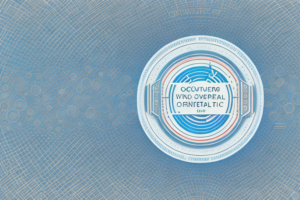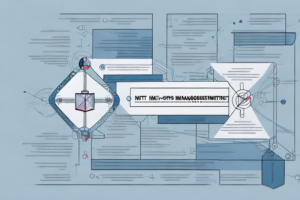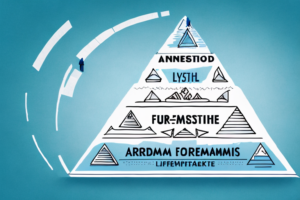What is the most used Risk Management Framework?
8 min read
A risk management framework
In today’s business world, it is critical to have a comprehensive risk management plan in place to ensure the success and longevity of your organization. Risk management is a process of identifying potential risks, analyzing their impact, and taking measures to mitigate or avoid them altogether.
The Importance of Risk Management in Today’s Business Environment
Risk management is critical not only in avoiding financial losses but also in maintaining a company’s reputation and credibility. Every business, big or small, faces a range of complex and unpredictable risks that could cripple the organization if not identified and addressed in a timely and efficient manner. Therefore, a well-constructed risk management framework is crucial to minimize the impact of these unforeseeable risks, ensure business continuity, and protect shareholders’ investment.
One of the key benefits of effective risk management is that it enables businesses to make informed decisions. By identifying potential risks and assessing their likelihood and impact, companies can evaluate the potential outcomes of different courses of action and choose the one that offers the best balance of risk and reward. This can help businesses to avoid costly mistakes and make strategic decisions that drive growth and profitability.
Another important aspect of risk management is that it helps businesses to comply with legal and regulatory requirements. Many industries are subject to strict regulations, and failure to comply with these regulations can result in significant fines, legal action, and damage to a company’s reputation. By implementing a robust risk management framework, businesses can ensure that they are aware of their legal obligations and take steps to meet them, reducing the risk of non-compliance and associated penalties.
Understanding the Different Types of Risk Management Frameworks
Before you can implement a risk management framework, it is essential to understand the different types available. Here are the major categories:
- Enterprise Risk Management (ERM)
- Operational Risk Management (ORM)
- Project Risk Management (PRM)
- Cybersecurity Risk Management (CRM)
Each of these frameworks focuses on specific types of risks inherent to an organization and has unique methodologies for identifying, assessing, monitoring, and mitigating those risks.
Enterprise Risk Management (ERM) is a comprehensive approach to risk management that considers all risks across an organization. It involves identifying and assessing risks, developing risk mitigation strategies, and monitoring risk on an ongoing basis. ERM is typically used by large organizations with complex risk profiles.
Operational Risk Management (ORM) focuses on risks that arise from an organization’s day-to-day operations. This includes risks related to processes, systems, and people. ORM aims to identify and mitigate risks before they can impact an organization’s operations or reputation. ORM is commonly used in industries such as finance, healthcare, and manufacturing.
Benefits of Implementing a Risk Management Framework
Implementing a risk management framework offers several benefits to a company, including:
- Reducing potential losses due to risks that have been identified and mitigated.
- Providing a structured approach for identifying and assessing future risks.
- Ensuring compliance with regulatory requirements.
- Improving decision-making by providing crucial insight and data to stakeholders.
- Creating a culture of risk awareness and accountability among employees.
Another benefit of implementing a risk management framework is that it can help a company to prioritize its resources. By identifying and assessing risks, a company can determine which risks are most likely to occur and which risks would have the greatest impact on the company if they were to occur. This information can then be used to allocate resources to the areas of greatest need, ensuring that the company is prepared to handle any potential risks.
Finally, implementing a risk management framework can help a company to build trust with its stakeholders. By demonstrating that the company is aware of potential risks and is taking steps to mitigate them, the company can build confidence among its customers, investors, and other stakeholders. This can lead to increased loyalty, improved reputation, and ultimately, increased profitability.
The Top 5 Most Used Risk Management Frameworks Explained
Here are the five most commonly used risk management frameworks:
- ISO 31000:2018 – International Organization for Standardization’s Risk Management Guidelines.
- COSO ERM Framework – Committee of Sponsoring Organizations of the Treadway Commission’s Enterprise Risk Management Framework.
- NIST Cybersecurity Framework – National Institute of Standards and Technology’s framework for cybersecurity risk management.
- FAIR Framework – Factor Analysis of Information Risk Framework for quantifying and analyzing information and technology risks.
- PMI PMBOK Project Risk Management – Project Management Institute’s framework for assessing and analyzing project management risks.
Each of these frameworks has its own unique approach to risk management, but they all share the common goal of identifying, assessing, and mitigating risks to an organization. ISO 31000:2018, for example, emphasizes the importance of communication and consultation throughout the risk management process, while the COSO ERM Framework focuses on aligning risk management with an organization’s overall strategy and objectives.
It’s worth noting that while these frameworks are widely used, they are not one-size-fits-all solutions. Organizations should carefully evaluate their specific needs and goals before selecting a framework to implement. Additionally, effective risk management requires ongoing monitoring and adaptation to changing circumstances, so it’s important to regularly review and update risk management strategies and frameworks.
How to Choose the Right Risk Management Framework for Your Business
Choosing the right risk management framework for your business depends on several factors such as the size of your organization, the industry you operate in, the risks you face, and your organization’s risk appetite. It is crucial to select a framework that aligns with your organization’s goals and objectives.
Another important factor to consider when choosing a risk management framework is the level of complexity and resources required to implement and maintain the framework. Some frameworks may be more complex and require more resources than others, which may not be feasible for smaller organizations with limited resources. It is important to assess the level of resources and expertise available within your organization before selecting a framework.
A Comprehensive Comparison of the Top Risk Management Frameworks
Comparing the various risk management frameworks’ strengths and weaknesses can help organizations make informed decisions when choosing a framework to implement. This comparison can include factors such as the framework’s scope, risk assessment methodologies, risk mitigation techniques, and tools and technologies used.
One of the most popular risk management frameworks is the ISO 31000, which provides a comprehensive approach to risk management that can be applied to any organization, regardless of its size or industry. It emphasizes the importance of risk management as a strategic tool for achieving organizational objectives and improving performance.
Another framework that has gained popularity in recent years is the NIST Cybersecurity Framework, which is specifically designed to help organizations manage cybersecurity risks. It provides a set of guidelines and best practices for identifying, assessing, and mitigating cyber threats, and is widely used by government agencies and private sector organizations alike.
Best Practices for Implementing a Successful Risk Management Framework
Implementing a successful risk management framework requires careful planning, execution, and monitoring. Here are some best practices to follow:
- Engage senior management and key stakeholders throughout the implementation process.
- Allocate sufficient resources, including budget, people, and tools.
- Develop a risk management policy that outlines the framework’s objective, scope, accountability, and reporting process.
- Educate and train employees on the risk management framework and their role in identifying, assessing, and mitigating risks.
- Continuously monitor and update the framework based on new risks and changing business requirements.
Another best practice for implementing a successful risk management framework is to establish a risk appetite and tolerance level. This helps to ensure that risks are identified and assessed based on their potential impact on the organization’s objectives and goals. It also helps to prioritize risks and allocate resources accordingly.
It is also important to regularly communicate the status of the risk management framework to all stakeholders, including employees, customers, and investors. This helps to build trust and confidence in the organization’s ability to manage risks effectively and protect its assets.
Common Challenges in Implementing a Risk Management Framework and How to Overcome Them
Implementing a risk management framework can be challenging, and organizations often encounter various roadblocks. Some common challenges include lack of buy-in from employees and senior management, inadequate resources, and difficulty in measuring the framework’s effectiveness. To overcome these challenges, it is essential to communicate the framework’s importance, provide sufficient training and resources, and establish key performance indicators to measure its effectiveness.
Another challenge that organizations face when implementing a risk management framework is the lack of a clear understanding of the risks they face. This can lead to a failure to identify and prioritize risks, which can result in ineffective risk management. To overcome this challenge, organizations should conduct a thorough risk assessment to identify and prioritize risks based on their potential impact and likelihood of occurrence.
Additionally, organizations may struggle with integrating the risk management framework into their existing processes and systems. This can lead to duplication of efforts and confusion among employees. To overcome this challenge, organizations should ensure that the risk management framework is integrated into all relevant processes and systems, and that employees are trained on how to use it effectively.
Tips for Maintaining and Updating Your Risk Management Framework Over Time
Maintaining and updating the risk management framework over time is essential to ensure its long-term effectiveness. Here are some tips for doing so:
- Stay up-to-date with industry trends and regulatory changes.
- Conduct regular risk assessments to identify new or emerging risks.
- Review and update the framework periodically to ensure it remains aligned with your organization’s goals and objectives.
- Encourage a culture of continuous improvement by providing regular risk management training to employees.
Future Trends in Risk Management Frameworks and What They Mean for Businesses
Risk management is an ever-evolving field, and organizations need to be aware of the latest trends and developments in the industry. Some future trends include the use of Artificial Intelligence and Machine Learning for risk assessment and mitigation, the integration of risk management into organizational strategy, and the increased importance of data-driven decision-making in risk management.
Case Studies: Real-Life Examples of Successful Implementation of Different Risk Management Frameworks
Real-life case studies provide practical insights into how organizations have successfully implemented different risk management frameworks to mitigate their risks. These cases can help organizations understand the frameworks’ practical application and potential benefits.
The Role of Technology in Enhancing Your Risk Management Framework
The use of technology in risk management can improve the framework’s efficiency and effectiveness. Technology can automate risk assessment and data analysis processes, enhance the accuracy and speed of risk identification, and enable real-time monitoring. However, it is essential to choose the right technology solution that aligns with your organization’s goals and objectives.
Key Considerations When Transitioning to a New or Updated Risk Management Framework
Transitioning to a new or updated risk management framework requires careful planning and execution to minimize disruption and ensure a smooth transition. Key considerations include understanding the implications of the new framework, providing sufficient training and communication to employees, and developing a detailed transition plan that includes timelines, roles, and responsibilities.
In conclusion, risk management is an imperative process that every organization should implement to mitigate its risks, ensure business continuity, and protect its reputation. The choice of risk management framework should be based on an organization’s unique circumstances, goals, and objectives. Determining which risk management framework best suits an organization requires careful examination and due diligence to understand the categories’ strengths and weaknesses.



